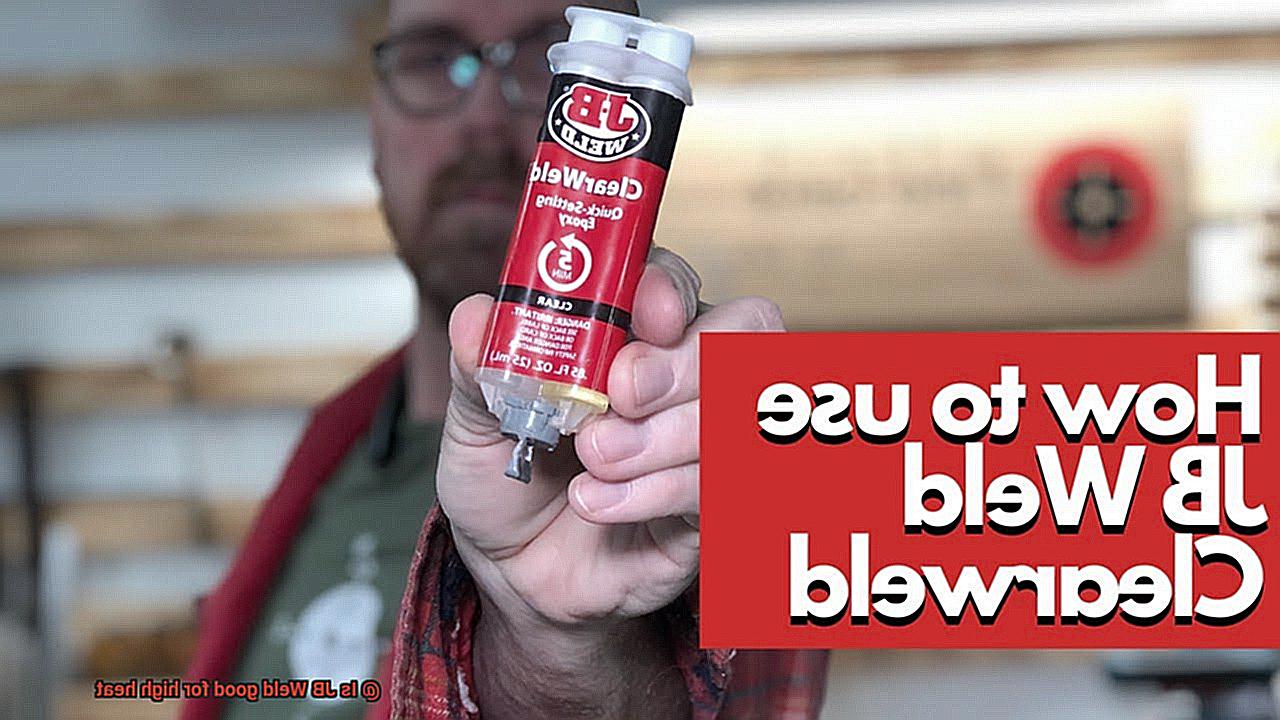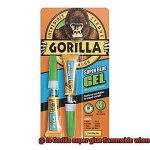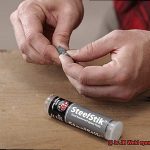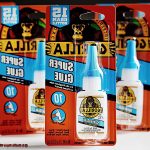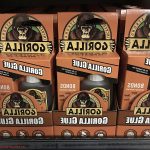Looking for an adhesive that can handle the heat?
This bad boy promises to tackle even the toughest high-temperature projects.
From fixing exhaust systems to repairing cracked engine blocks, JB Weld claims to have your back when things get hot and heavy. But does it really live up to the hype?
In this blog post, we’ll dive into the nitty-gritty of JB Weld’s effectiveness for high heat applications. We’ll explore its features, benefits, and any potential limitations you need to know about.
So, sit tight and prepare yourself for the truth about whether JB Weld is truly the heat-resistant hero we’ve all been waiting for.
Temperature Resistance of JB Weld
Contents
- 1 Temperature Resistance of JB Weld
- 2 Advantages of Using JB Weld for High Heat Applications
- 3 Common Uses of JB Weld in Automotive Repairs
- 4 Household Uses of JB Weld
- 5 Tips for Ensuring Maximum Strength with JB Weld
- 6 Alternatives to JB Weld for High Heat Applications
- 7 Specialized High Temperature Epoxies
- 8 Professional Guidance on Selecting the Appropriate Adhesive
- 9 Conclusion
When searching for an adhesive to withstand the scorching temperatures of high heat applications, the resilience of temperature resistance becomes paramount. JB Weld, a renowned epoxy adhesive, has garnered a reputation for its unwavering bond and remarkable versatility. This article delves into the temperature resistance of JB Weld, exploring its capabilities and applications in environments that would make other adhesives crumble.
Maximum Temperature:
- JB Weld exhibits an astounding ability to endure temperatures up to 550°F (287°C) once it has fully cured.
- This unparalleled endurance renders it suitable for an extensive range of high heat applications, including automotive repairs, engine parts, and exhaust systems that are constantly subjected to intense thermal stress.
Product Variants:
- In addition to its unparalleled temperature resistance, JB Weld also offers specialized product variants formulated specifically for high heat applications.
- One noteworthy variant is the JB Weld ExtremeHeat, which boasts an astonishing capacity to withstand temperatures up to 2,400°F (1,315°C).
- Ideal for repairs on exhaust manifolds, fireplaces, grills, and other areas exposed to the searing inferno of extreme heat, this variant pushes the boundaries of what is possible with an adhesive.
Usage Recommendations:
Follow Instructions:
- Adhering closely to the manufacturer’s instructions is crucial for achieving optimal bond strength and temperature resistance with JB Weld.
- Meticulous surface preparation, precise mixing ratios, and adequate curing time are vital components for obtaining exceptional results in high heat environments.
Project Considerations:
- While JB Weld stands strong against high temperatures, it is important to note that it is not recommended for continuous exposure to extreme heat or open flames.
- For projects requiring continuous exposure to extreme temperatures or open flames, it is prudent to explore specialized adhesives specifically designed to meet those rigorous requirements.
Advantages of Using JB Weld for High Heat Applications
JB Weld is the ultimate adhesive for high heat applications. Its advantages are numerous and make it the go-to choice for any project involving extreme heat.
First and foremost, JB Weld boasts exceptional bonding strength. It forms strong and durable bonds on a variety of materials, including metal, ceramic, glass, wood, and plastic. This means you can trust it to create a permanent bond that won’t give in under extreme heat conditions.
Another advantage of JB Weld is its resistance to thermal cycling. Many adhesives crack or weaken under the stress and strain caused by temperature changes. But not JB Weld. This adhesive is formulated to handle these fluctuations without compromising the bond’s integrity.
Chemical resistance is yet another perk of using JB Weld for high heat applications. It can resist oils, fuels, acids, and other corrosive substances commonly encountered in industrial settings. So whether you’re dealing with automotive repairs, plumbing fixtures, or industrial machinery, JB Weld has got your back.
Not only is JB Weld highly effective, but it’s also easy to use. The two-part system consists of a resin and a hardener that are mixed together in equal proportions. Once applied, the adhesive sets within 4-6 hours and achieves full cure within 24 hours. This means you can get your high heat projects done in no time.
And let’s not forget about the versatility of this amazing adhesive. You can apply it using a brush, spatula, or even inject it into tight spaces with a syringe. This flexibility allows you to tackle projects of any complexity, no matter how inaccessible the bonding surfaces may be.
Common Uses of JB Weld in Automotive Repairs
JB Weld is a superhero adhesive in the world of automotive repairs. It has gained a reputation as a versatile and reliable solution for various applications, thanks to its resistance to high temperatures. Let’s take a closer look at some common uses of JB Weld in automotive repairs:
- Exhaust Systems: The exhaust system is exposed to extreme heat from the engine, especially near the manifold. Traditional adhesives may fail under such conditions, resulting in leaks or a repair that goes up in smoke. But fear not, JB Weld can handle temperatures up to 550 degrees Fahrenheit (287 degrees Celsius), making it the perfect solution for sealing cracks or holes in exhaust pipes and manifolds.
- Radiators: Over time, radiators can develop leaks or cracks, leading to engine overheating. JB Weld can come to the rescue once again by effectively sealing those pesky leaks. However, keep in mind that this should only be used as a temporary fix until you can get a permanent solution.
- Engine Blocks and Cylinder Heads: These components endure high temperatures and pressures, and any cracks or damage can seriously affect your engine’s performance. JB Weld can bond those metal surfaces together like nobody’s business, providing a durable and reliable repair solution.
- Fuel Tanks and Transmission Cases: JB Weld is also great for fixing fuel tanks and transmission cases, which are exposed to harsh conditions and constant vibrations. Its ability to create strong bonds ensures that your repairs will hold up even under these demanding circumstances.
- Intake Manifolds and Plastic Components: JB Weld’s versatility extends beyond metal repairs. It can also be used to seal intake manifolds and certain plastic components, making it an all-around adhesive for many automotive needs.

Household Uses of JB Weld
Look no further than the mighty JB Weld, the adhesive superhero ready to tackle all your high-temperature needs. Whether you’re fixing a cracked exhaust manifold, sealing a leaky fireplace insert, or repairing a kitchen appliance, JB Weld is the ultimate sidekick.
So, how does JB Weld handle the scorching heat? It’s all in its secret formula. JB Weld is a high-temperature epoxy adhesive with a remarkable resistance of up to 550°F (287°C). That means it can take the heat generated by your car engine or the fiery flames in your fireplace without even breaking a sweat.
But before you grab your cape and start wielding the JB Weld, there are some ground rules to follow. First and foremost, heed the manufacturer’s instructions for curing time and temperature. This will ensure that your repair becomes an impenetrable fortress of strength and durability.
Next, clean those surfaces like a pro. Rid them of any grime, grease, or rust before applying JB Weld. This will guarantee optimal adhesion and performance, ensuring your repair holds tight.
When using JB Weld for high-heat applications, layering is key. Apply multiple thin layers, allowing each one to cure fully before adding the next. This technique will unleash maximum strength and heat resistance, making sure your repair stands up to the test of time.
Tips for Ensuring Maximum Strength with JB Weld
When it comes to high heat applications, JB Weld is a trusted adhesive known for its strength and durability. However, to ensure maximum strength in these challenging conditions, it is essential to follow some expert tips and techniques. In this article, we will explore five key areas to focus on: surface preparation, roughening the surfaces, applying thin layers, clamping the bond, and allowing sufficient curing time.
Prep That Surface:
One of the most critical steps in achieving maximum strength with JB Weld is proper surface preparation. Before starting your project, thoroughly clean the surfaces you plan to bond. Remove any dirt, grease, or rust using a degreaser or solvent. A clean surface ensures optimal adhesion and creates a strong foundation for the bond.
Roughen It Up:
To enhance the bond’s strength, consider roughening the surfaces before applying JB Weld. Use sandpaper or a file to create a textured surface. This roughness allows JB Weld to grip onto the material better and creates more surface area for a stronger bond that can withstand high heat.
Thin is In:
When applying JB Weld, remember that thin is in. Apply the adhesive evenly and in thin layers. This ensures that it spreads uniformly across the surfaces and prevents excessive buildup that could weaken the bond. Follow the manufacturer’s instructions for proper application techniques and use a clean mixing surface to achieve the recommended mixing ratio.
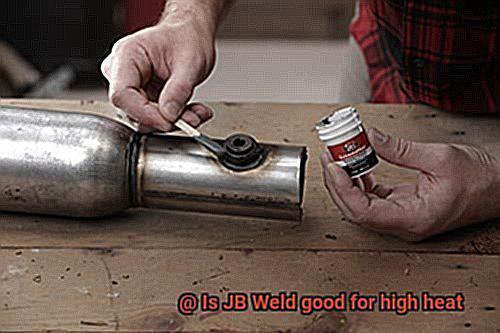
Clamp It Down:
To lock in maximum strength, give your bond some extra reinforcement by clamping it down while the JB Weld cures. This constant pressure prevents any movement that could compromise the adhesive’s effectiveness. Depending on your project, use appropriate clamps or find creative ways to secure the bond until it is fully cured.
Time Heals All:
Patience is key when it comes to achieving maximum strength with JB Weld. Allow sufficient curing time as per the manufacturer’s instructions. Factors like temperature and humidity can affect curing time, so be sure to follow the guidelines closely. Avoid subjecting the bonded area to stress or load until it’s fully cured to ensure a strong and durable bond.
Alternatives to JB Weld for High Heat Applications
In the vast world of adhesives, JB Weld has long reigned supreme as a go-to solution for bonding needs. However, when it comes to high heat applications, it may not always be the best option. Fear not, for we have scoured the market to bring you the top alternatives that will withstand the heat and keep your project intact.
Permatex High-Temp Red RTV Silicone Gasket Maker:
Step into the fiery battleground with this silicone-based adhesive that is a true warrior in high heat conditions. Withstanding scorching temperatures up to 650 degrees Fahrenheit, it offers exceptional flexibility and resistance to oil, water, and other chemicals. This makes it perfect for sealing gaps and creating durable gaskets that will hold up under extreme heat.
3M Scotch-Weld Hi-Temperature Epoxy Adhesive:
Designed specifically for high temperature applications, this epoxy adhesive stands strong against temperatures up to 350 degrees Fahrenheit. Its formidable bond and resistance to chemicals make it ideal for metal-to-metal bonding or repairing machinery that operates in extreme environments.
Cotronics Duralco 4538 High-Temperature Epoxy:
When the heat reaches its boiling point, this specialty epoxy adhesive steps up to the challenge with unwavering courage. Boasting an impressive temperature resistance of up to 600 degrees Fahrenheit, it is the ultimate ally for working with furnaces or aerospace components.
Heat-Resistant Tapes and Wraps:
Sometimes, a temporary or semi-permanent solution is all you need in the scorching heat. Versatile options like heat-resistant tapes and wraps can handle temperatures up to several hundred degrees Fahrenheit. They are perfect for insulating pipes, sealing gaps, or securing wires with ease and reliability.
Specialized High Temperature Epoxies
Well, fear not, my friend, because I have the inside scoop on specialized high temperature epoxies that will blow your mind. These extraordinary adhesives are designed to withstand extreme heat conditions, making them the perfect solution for applications where regular glues would simply melt away.
What makes these epoxies so special, you ask? It’s all in the formulation. Packed with heat-resistant additives, these epoxies possess the power to maintain their strength and integrity even at temperatures as scorching as 500 degrees Fahrenheit or more. That’s hotter than a blazing summer day in Death Valley.
These magical epoxies are commonly used in industries such as automotive, aerospace, electronics, and manufacturing, where high temperatures are just another day at the office. They offer excellent thermal stability, chemical resistance, and electrical insulation properties. Whether bonding metals, ceramics, glass, or even some plastics, specialized high temperature epoxies are the go-to choice.
One well-known brand that offers a range of high temperature epoxies is none other than JB Weld. Their HighHeat epoxy is a real powerhouse capable of withstanding temperatures up to a sizzling 550 degrees Fahrenheit once fully cured. It’s perfect for repairs on items like exhaust manifolds, grills, ovens, fireboxes—the list goes on.
But remember, my friend, not all high temperature epoxies are created equal. It’s essential to choose the right product for your specific application and follow the manufacturer’s instructions carefully for proper application and curing. And if you’re dealing with temperatures beyond what these epoxies can handle, you may need to explore other advanced materials like ceramic adhesives or refractory cements.
Professional Guidance on Selecting the Appropriate Adhesive
Selecting the appropriate adhesive for high heat applications is a critical decision that can make or break your project. The last thing you want is for all your hard work to go up in smoke. So, let’s dive into the fascinating world of high heat adhesives and explore some professional guidance on making the right choice.
When it comes to high heat applications, there are several key properties to consider in an adhesive:
- Temperature resistance: Look for adhesives specifically designed to withstand scorching temperatures without losing strength or breaking down. Epoxies, silicones, and cyanoacrylates are excellent options for high heat applications.
- Thermal conductivity: Consider how well the adhesive can transfer heat without melting or becoming brittle. This property is crucial when things get hot and steamy.
- Thermal expansion: As temperatures rise, objects tend to expand. To prevent stress or cracking in your project, opt for adhesives with low coefficients of thermal expansion.
Now that we understand the important properties, let’s explore some common types of adhesives suitable for high heat applications:
- Epoxy: Known for its strength and ability to withstand high temperatures, epoxy is perfect for bonding metal parts or repairing heat-sensitive components.
- Silicone: Flexible and resistant to extreme temperatures, silicone adhesives are great for sealing and bonding in high heat environments.
- Cyanoacrylate: Ideal for quick fixes in high temperature situations, choose a cyanoacrylate specifically formulated for high heat applications.
But wait, there’s more. Consider these factors when selecting the right adhesive:
- Substrate material compatibility: Ensure the adhesive is compatible with the materials you’re working with, be it metal, glass, or ceramic.
- Curing time: Some adhesives require longer curing times at high temperatures. Consider your project timeline and how quickly you need it ready for action.
- Environmental factors: If your project will be exposed to harsh chemicals or extreme weather conditions, take these factors into account when making your adhesive choice.
One standout option in the world of high temperature adhesives is JB Weld’s HighHeat epoxy. Once fully cured, it can handle an impressive 550 degrees Fahrenheit, making it a superhero in the realm of high heat resistance.
XObmZIbHOzY” >
Also Read: Can You Put JB Weld Over JB Weld? – The Welding Guru
Conclusion
In conclusion, JB Weld proves itself as a dependable adhesive when it comes to tackling high heat challenges. Its impressive temperature resistance of up to 550°F (287°C) makes it a formidable contender for automotive repairs, engine parts, exhaust systems, and more. But wait, there’s more. JB Weld goes above and beyond with its ExtremeHeat variant, capable of withstanding mind-boggling temperatures of up to 2,400°F (1,315°C). Talk about pushing the boundaries of adhesive performance.
The perks of using JB Weld for high heat applications are aplenty. Not only does it exhibit exceptional bonding strength on a variety of materials, but it also stands strong against the thermal cycling and chemicals commonly encountered in industrial settings. Plus, its user-friendly nature and versatility in application methods make it an all-around winner.
However, don’t forget that following the manufacturer’s instructions is key to unlocking optimal bond strength and temperature resistance. While JB Weld can handle high temperatures like a champ, subjecting it to continuous extreme heat or open flames wouldn’t be wise. In those cases, it might be worth exploring specialized adhesives tailored specifically for those rigorous requirements.
If you’re on the hunt for alternatives to JB Weld for your high heat endeavors, fear not. There are other options out there that can rise to the occasion. Consider checking out Permatex High-Temp Red RTV Silicone Gasket Maker, 3M Scotch-Weld Hi-Temperature Epoxy Adhesive, Cotronics Duralco 4538 High-Temperature Epoxy, or even heat-resistant tapes and wraps.
All in all, when selecting an adhesive for high heat applications, keep an eye out for properties like temperature resistance that can withstand the heat onslaughts you throw at it. Also consider factors such as thermal conductivity and expansion, compatibility with different substrate materials, curing time requirements, and environmental influences.

